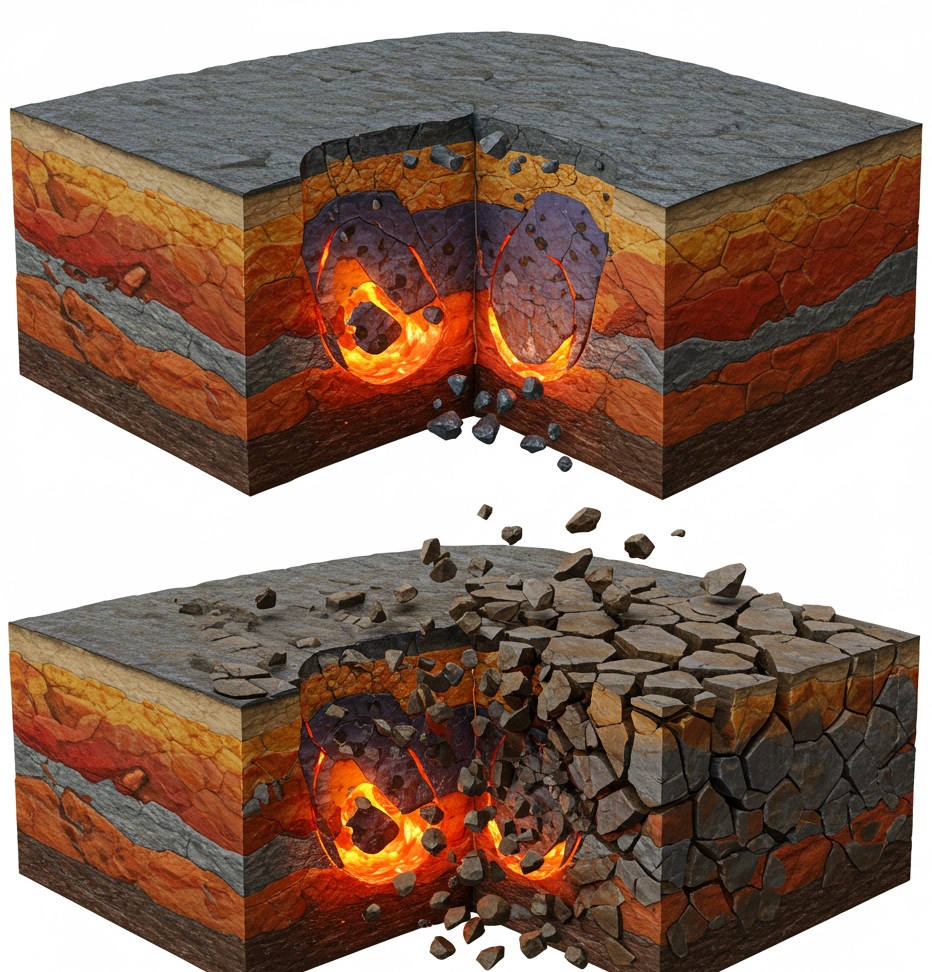
Imagine the Earth’s mantle as a giant, slow-motion lava lamp.
Now, picture massive blobs of rock, heavier and cooler than their surroundings, slowly dripping down through it. This isn’t science fiction; it’s a real phenomenon happening right now, right beneath our feet in North America! Researchers at The University of Texas at Austin have uncovered this “craton thinning,” a geological spectacle that’s reshaping our continent in subtle but significant ways.
This incredible discovery stems from a massive project led by Junlin Hua, now a professor at the University of Science and Technology of China. By developing a sophisticated seismic tomographic model for North America, using data from the Earth Scope project, they were able to peer deep into the Earth’s crust and mantle. This model, powered by the expertise of co-author Stephen Grand, revealed geological secrets hidden for millennia.

Why is this “craton dripping” so significant?
Cratons are the ancient, stable cores of continents, some billions of years old. They’re like the old-growth forests of the geological world, typically unyielding to change. But, as this study shows, even these giants can be reshaped. Thorsten Becker, a professor at UT’s Jackson School of Geosciences, emphasizes, “This is vital for understanding planetary evolution over extensive time periods. It aids in understanding the formation, fragmentation, and recycling of continents within the Earth.”

What’s causing this geological waterfall?
The culprit appears to be the remnants of the Farallon Plate, an ancient oceanic plate that’s been diving beneath North America for about 200 million years. Even though it’s now about 600 kilometers away from the craton, it’s still exerting a powerful influence. This plate is essentially eroding the continent from below, redirecting mantle material and releasing volatile compounds that weaken the craton’s base.
Now, before you start picturing the Midwest sinking into the Earth, take a deep breath. This dripping process is incredibly slow. As Junlin Hua points out, “A wide area is experiencing thinning,” but the mantle processes are gradual, and their impact on the tectonic plates is spread out over vast stretches of time. Eventually, as the Farallon Plate remnants sink deeper, their influence will diminish, and the dripping will cease.
Dynamism Factor
The real takeaway here isn’t about immediate danger, but about the incredible dynamism of our planet. As Becker notes, “You question if a model is realistic, or whether it reveals new insights about Earth. These blobs seem to be an observable phenomenon.” These “rock blobs” are a testament to the Earth’s ongoing evolution, a hidden spectacle playing out beneath our feet, reminding us that our planet is a living, breathing entity, constantly changing and reshaping itself.

Conclusion: This research, supported by the National Science Foundation and the Jackson School of Geosciences, provides vital clues about the lifecycle of continents. It’s a reminder that even the most stable structures are subject to change, and that the Earth’s story is still being written, one slow, dripping blob at a time.
LATEST
-
Touched by Zeus: How a Fatal Lightning Strike Peek in to the Glimpse of the Great Beyond
The Man Who Cheated Death Dannion Brinkley isn’t your average Joe. This guy has…
-
iPhones ‘Made in USA’: A Financial Nightmare for Apple Fans?
Imagine walking into an Apple store and seeing an iPhone price tag that reads…
-
The Milky Way to Better Grades? Exam Room Findings Shake Up School Lunches
The recent buzz about the “Whole Milk for Healthy Kids Act” has us, and…










